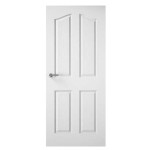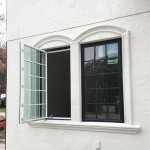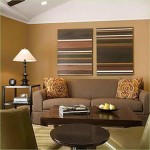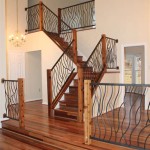How Much Does An Interior Designer Make In NY? A Comprehensive Overview
The allure of New York City, a global hub for design and innovation, draws many aspiring interior designers. Understanding the potential financial rewards is a crucial factor in deciding whether to pursue a career in this vibrant, albeit competitive, field. The salary of an interior designer in New York varies considerably, influenced by several key determinants, including experience, education, specialization, firm size, and the ability to cultivate a strong professional network. This article provides a detailed exploration of the factors affecting interior designer compensation in New York, offering a comprehensive picture of the earnings landscape.
Experience and Expertise: The Foundation of Earning Potential
Experience is a fundamental factor influencing the earning potential of an interior designer in New York. Entry-level positions, typically held by recent graduates or individuals with limited practical experience, command relatively lower salaries. These roles often involve assisting senior designers, preparing presentations, and supporting project management tasks. As designers gain experience and develop a portfolio of successful projects, their earning capacity increases substantially. Senior designers, with extensive experience and a proven track record, can command significantly higher salaries due to their ability to lead complex projects, manage client relationships effectively, and contribute strategically to the firm's growth.
The level of expertise within a particular design niche can also affect compensation. Designers specializing in high-end residential projects, for example, might command higher fees than those focusing on commercial spaces or smaller-scale renovations. Similarly, expertise in sustainable design, accessible design, or specific software programs (such as AutoCAD, Revit Architecture, or SketchUp) can increase a designer's marketability and earning potential.
Furthermore, the size and scope of projects handled contribute significantly to earning potential. Designers working on large-scale developments or high-profile projects typically receive higher compensation than those working on smaller, less complex assignments. The complexity of the project, including the budget managed and the number of individuals supervised, directly correlates with the responsibilities assumed by the designer and the associated compensation.
Education, Certification, and Specialized Skills: Enhancing Market Value
A strong educational foundation is crucial for success in the field of interior design. While talent and creativity are essential, a formal education provides the necessary technical skills, design theory knowledge, and professional connections to excel. A bachelor's degree in interior design from an accredited institution is generally considered the minimum requirement for most entry-level positions. Some designers pursue a master's degree to further enhance their expertise and specialization, opening doors to more advanced roles and potentially higher salaries.
Professional certifications can also significantly impact earning potential. The National Council for Interior Design Qualification (NCIDQ) certification is widely recognized and respected within the industry. Obtaining NCIDQ certification demonstrates a designer's competence and adherence to professional standards, often leading to increased job opportunities and higher salaries. Other certifications, such as LEED accreditation (Leadership in Energy and Environmental Design), can be valuable for designers specializing in sustainable design.
Beyond formal education and certifications, specific technical skills are highly valued in the industry. Proficiency in computer-aided design (CAD) software, building information modeling (BIM) software, and graphic design programs is essential for creating accurate drawings, renderings, and presentations. Strong communication skills, both written and verbal, are also crucial for effectively communicating with clients, contractors, and other stakeholders. The ability to manage projects effectively, including budgeting, scheduling, and problem-solving, is highly sought after and rewarded.
Firm Size, Location, and Market Demand: External Factors Influencing Salary
The size and reputation of the design firm play a significant role in determining salary levels. Large, well-established firms typically offer more competitive salaries and benefits packages compared to smaller firms or freelance positions. These larger firms often have the resources to invest in employee development and offer opportunities for advancement, leading to increased earning potential over time. However, smaller firms may offer more opportunities for creative freedom and a more personalized work environment.
The specific location within New York City can also influence salary. Design firms located in Manhattan, particularly in areas with a high concentration of luxury residential developments or corporate headquarters, may offer higher salaries due to the higher cost of living and the greater demand for experienced designers. Firms located in other boroughs, such as Brooklyn or Queens, may offer slightly lower salaries, although the overall cost of living in these areas is generally lower as well.
Market demand for interior design services is another critical factor affecting salary levels. During periods of economic growth and increased construction activity, the demand for designers typically rises, leading to higher salaries. Conversely, during economic downturns, the demand for design services may decline, resulting in reduced salaries or even layoffs. Keeping abreast of industry trends and economic conditions is essential for understanding the current market demand and negotiating a competitive salary.
Furthermore, the type of services the firm specializes in heavily impacts the salary offerings. Firms focused on high-end residential projects, hospitality design, or commercial spaces tailored towards large corporations often generate significant revenue, thus allowing them to offer more competitive compensation packages. The profitability and reputation of the firm directly impact resource allocation, including salary investments for design professionals.
Networking and professional affiliations also play a crucial role. Membership in professional organizations like the American Society of Interior Designers (ASID) offers networking opportunities, access to industry resources, and professional development programs. Building strong relationships with other designers, architects, contractors, and suppliers can lead to valuable referrals and job opportunities. Active participation in industry events and conferences can also enhance a designer's visibility and reputation, increasing their earning potential.
Finally, the designer's negotiating skills are paramount in securing a favorable salary. Researching industry benchmarks, understanding your worth, and articulating your skills and experience effectively are essential for negotiating a competitive compensation package. Preparing a compelling portfolio, highlighting successful projects, and demonstrating a clear understanding of the firm's needs can significantly strengthen your negotiating position. Being prepared to discuss your salary expectations and justify your value to the firm is crucial for achieving your desired earning potential.

Interior Design Job Salary How Much Money Do Designers Make Weekend

The Best Of Usa Top 20 Nyc Interior Designers

Top 10 New York Interior Designers

Interior Designers The Nyc Top 20 Daily Design News

New York School Of Interior Design Overview

Interior Designers Occupational Outlook Handbook U S Bureau Of Labor Statistics

New York Interior Designer On Why A Luxury Home Must Anticipate The Owner S Needs Mansion Global

Making A Big Impact On Small Budget The New York Times

Top Nyc Interior Designers Our Selection Esperiri Milano

2024 New York Trends I Interior Design Trend Forecasting Trendbook
Related Posts








